Remember the time when you started at a new company? It is an emotional rollercoaster. You feel excited, proud, and nervous — all at the same time.
As you walk through that door, many things go through your mind: trying to remember the names of colleagues, understanding your new tasks, and getting acquainted with the company culture.
The one thing that makes it easy for new hires to have a smooth start at a company is the onboarding process. Onboarding a new employee is not an easy task and is often overlooked as a process. Onboarding, however, is more than just an administrative orientation — It is used to integrate new employees seamlessly into the company.
Companies with weak onboarding programs will most likely fail to retain their new hires.
So, what should you do as a manager to minimize this problem?
One way to minimize early exit is to include coaching strategies as part of your onboarding program — ensuring new hires have a positive experience.
Why Do New Hires Quit Early?
There are a number of reasons why new hires quit early.
1. Inaccurate Job Description
How would you feel if you bought something online and the contents were different from the one you ordered when it arrived? You will most likely feel cheated and disappointed. It is the same with job applications. You would not like it if you were assigned tasks that were different than the ones explained in the job description or during the interview. Misalignment between expectations and reality is a critical issue.
2. Lack of Support
When starting a new job, new hires take time to assimilate to the new role, tasks, and culture. So, it is no surprise if new hires leave when they are not given the proper training or tools to succeed in their role. It is important that managers guide new employees to bring them up to speed with what is expected of them.
3. Poor Management
Leadership styles, micromanagement, and the absence of psychological safety can be the trigger that pushes employees to leave a company. A 2021 study done by People Management Report proved this. The study found that 63% of employees working under a bad manager thought about leaving their jobs the following year. For many new employees, an early departure from their jobs can be easier than confronting their manager head-on.
4. Misalignment with Company Culture
Culture is important to people, as we all want to be part of a group of like-minded people. According to Leading Resources Incorporated, 75% of new hires leave a company because they feel disconnected from the work culture. Employees who are misaligned with company culture, lack a sense of belonging. They would find themselves disengaged and unproductive at work. Early in the interview, it is essential to discuss values and company culture with potential employees. This way, the new hire can get a good grasp of what your company culture is like, to check if it aligns with theirs.
When combined with coaching strategies, onboarding can have a positive impact. It is both beneficial for the company and the new hire themselves.
Benefits for the Company
- Better retention of new employees
- Sets up new hires for success immediately
- Higher ROI on recruitment costs
- Higher team engagement
- Higher engagement from the new employee
- Better communication helps establish trust between the company and new employee
- Better onboarding helps attract stronger candidates through referrals
Benefits for the New Hire
- Better support during the adjustment period
- Increased confidence in the workplace
- A better understanding of their goals and priorities
- Better work performance from the beginning
- Establish a better relationship with peers
- Quicker assimilation to the company culture
- Happier employee
7 Coaching Strategies to Make Your Onboarding Successful
Strong relationships are not built on weak foundations. If you want to improve talent retention, the onboarding process should be tweaked to deliver a better experience. By applying coaching strategies, you can make that possible. So, consider the following 7 tips:
1. Understanding Your New Hire
Introduce onboarding before the new hire joins the organization. Engaging new hires before the start date can make them feel valued and allow you to understand their characters and goals.
Take this time to introduce the company culture and how they are instilled in the workplace. Always be transparent about company policies that can impact an employee’s work-life balance, such as scheduling, remote work options, and vacation policies.
You may give the candidate an assessment to see how they work, and they can see what you expect from them. This way, they would not feel overwhelmed on their first day at the company.
2. Developing a Solid Plan
You must plan in advance if you want your onboarding to go smoothly. Consider creating an onboarding employee activity, where participants get to document their interactions, note their emotions and take part in ice breaker games..
You can establish a schedule that new hires can follow throughout the onboarding. This can help you monitor their progress within the first week and at the end of 30-, 60-, and 90- day periods.
3. Clarity in Role and Expectations
Employees can be encouraged to have discussions with their manager about their role and expectations from day one to have better clarity on their role and responsibilities.
As their leader, you also want to ensure new employees know how to access the tools they need for the day-to-day process of their role. This will include tech tools, meeting rhythms, communication channels, and SOPs. By doing this, new employees will be comfortable with anything they might be unfamiliar with.
4. Connect the Role to an Overall Strategy
To effectively integrate new hires into the team, you can introduce the company’s big picture early. This will help the new employee to pinpoint where they come into the picture and how their role will help with the overall strategy.
5. Adopt a Buddy System
It is beneficial for new hires to be assigned a “buddy” during their onboarding process to increase productivity. The system allows new employees to channel their questions and concerns regarding their new work environment to their buddies.
In Microsoft, 73% of their employees that interacted with their buddy 2-3 times in the first 90 days indicated that it helped them become more productive in their role.
Having a ‘buddy’ system in place is a win-win situation. Sharing knowledge and information with new hires deepens the understanding of their role. This, in turn, helps to improve the leadership and managerial skills of the buddy
6. Let Them Navigate on Their Own
An effective onboarding plan allows new hires to feel ownership of their success, allowing them to make decisions without having to constantly be checked on. The feeling of autonomy one has in their job can help build self-confidence that can accelerate their learning curve.
7. Prioritize 1-on-1 Time
Managers should arrange for a series of one-on-one sessions with new hires during onboarding. Personally reaching out to new hires can help with their success, making them feel connected.
This is also a time in which you can provide feedback on their progress. For new hires, it is the opportunity to share their experience during onboarding and to give helpful suggestions for improvement.
To Summarize;
Onboarding a new employee is never easy, but it is made easier when the onboarding program is well-planned. It allows managers to build a new hire’s confidence, increase engagement, and create an environment that prevents new hires from quitting early.
Related read: 7 Ways To Become A Better Remote Leader
Are You Interested in More Coaching Strategies?
Consider exploring Marshall Goldsmith Stakeholder Centered Coaching®. The program is committed to helping leaders improve their behavior and leadership skills. It boasts the world’s largest executive coach network with over 4,500 certified coaches around the globe.
MGSCC® has a proven methodology thoroughly tested via field research with over 500 CEOs and HR executives from Fortune 100 companies. The program has adopted a 70/20/10 framework because it believes that learning is more impactful as it becomes closer to the point of usage.
Aside from that, MGSCC® is designed with a modern learning method in mind:
- All-in-one Coach’s Portal and E-Learning Dashboard
- Learning Tools that are Available On-Demand
- Online Mentorship Program and 7 Skill Practice Sessions with world-renowned coaches
- Online Founders Q&A every month
- Supportive coaching community and peer-to-peer learning groups
- And much more!
Take your first step today. Learn more about MGSCC® by downloading our brochure here. If you have more questions to ask, feel free to speak to a program advisor here.
Share this:



19 Comments
Leave your reply.
I truly appreciate this post. Much obliged.
I appreciate you sharing this article.Really looking forward to read more. Awesome.
Great blog article. Great.
I think this is a real great blog post.Thanks Again. Want more.
Really appreciate you sharing this post. Really Great.
I cannot thank you enough for the blog. Really Cool.
Thanks a lot for the article.Really looking forward to read more. Really Great.
Fantastic post.Much thanks again. Cool.
Really enjoyed this post.Really looking forward to read more. Really Cool.
Thanks for the blog post.Really looking forward to read more. Awesome.
Awesome blog post.Much thanks again. Much obliged.
A big thank you for your post.Much thanks again. Want more.
I am so grateful for your article.Much thanks again. Keep writing.
Thanks-a-mundo for the blog article.Really looking forward to read more. Really Great.
Major thankies for the blog.Really thank you! Much obliged.
Say, you got a nice blog article.Much thanks again. Really Cool.
Wow, great article.Thanks Again. Want more.
Appreciate you sharing, great blog article.Really thank you! Want more.
A big thank you for your blog.Really looking forward to read more. Want more.